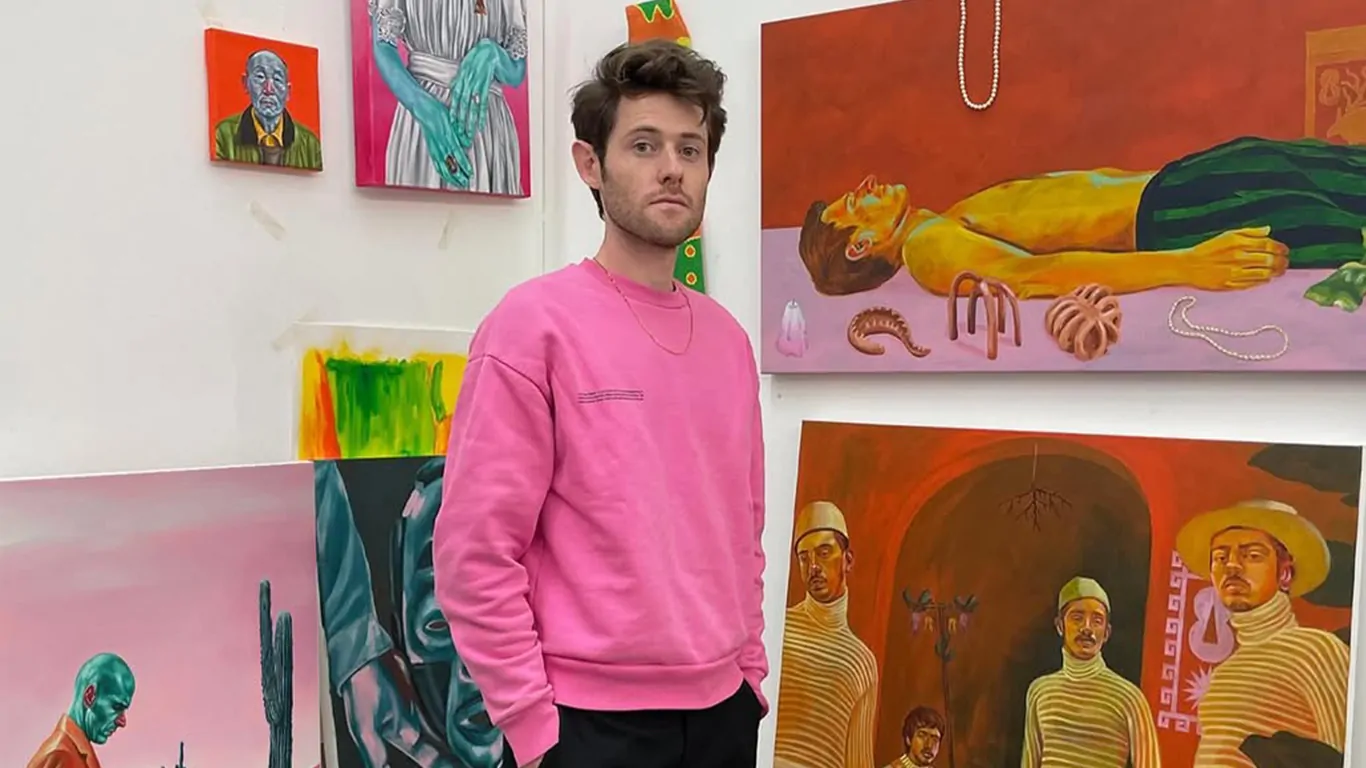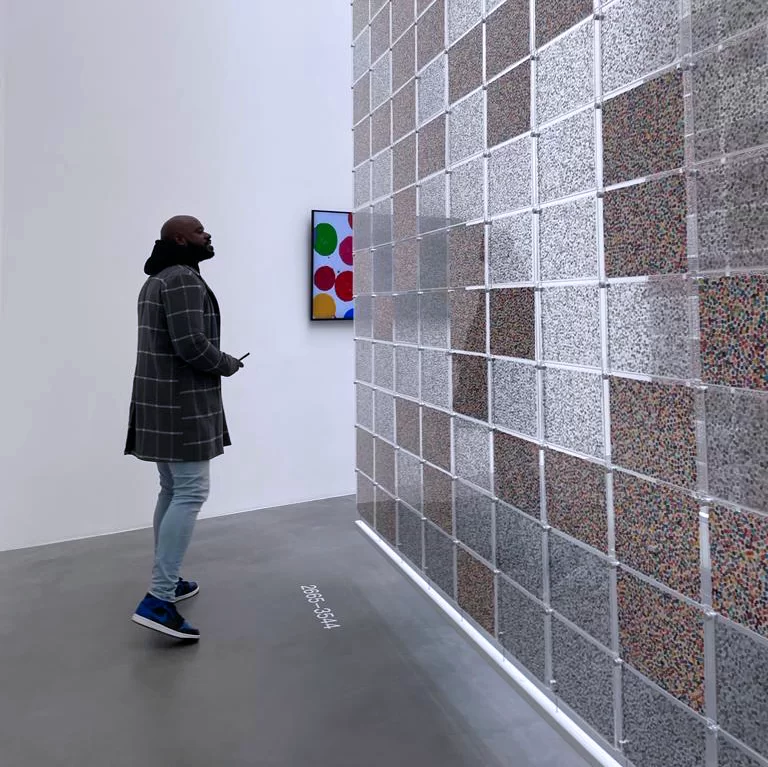Emerging artist Damien Cifelli Constructs a Fictional World to Help Us See Our Own More Clearly
In a moment when truth feels increasingly unstable and identity is in constant flux, emerging artist Damien Cifelli offers something deliberately elusive. A multidisciplinary artist and writer from Scotland, Cifelli has invented an entire fictional world—Tarogramma—not to provide answers, but to shift how we look for them. Through painting, sculpture, writing, sound and installation, he constructs a universe governed not by the logic of what is known, but by the potential of what might be.

Where everything feels simultaneous, contextless and adrift, where we have a fractured relationship with truth and a blurring of fiction and reality.
Damien Cifelli
Cifelli refers to his practice as “fictional anthropology”, a term that reflects his commitment to crafting worlds that feel both mysterious and strangely familiar. Within this imagined realm, time is fluid, truth is negotiable, and cultural boundaries dissolve. His paintings and sculptures serve as field reports from an alternate reality—objects that evoke the mythic while grounding us in the mundane. Rather than resolve or explain, they create space for questioning. “Only fiction allows us to experience the unknown and the impossible,” Cifelli says. “It allows us to stand outside ourselves and observe.”
Tarogramma is neither utopia nor dystopia. It exists in a liminal space defined not by coherence, but by the tension between recognition and disorientation. It offers viewers a refracted lens on the present, reflecting our uneasy relationship with truth, history, and the shifting border between fact and invention. What emerges is a speculative mirror: open-ended, intimate, and charged with uncertainty.
Cifelli’s upbringing in Edinburgh, where storytelling runs deep in the cultural fabric, informs much of his approach. Tarogramma unfolds like myth remembered—fragmented, layered, and never fully graspable. His travels have brought further nuance, folding a wide range of cultural references into the work. Literary figures such as Alasdair Gray, Clarice Lispector and Mark Fisher shape his sensibility, their explorations of fractured narrative, mysticism and hauntology resonating across his world-building.
Though wholly fabricated, Tarogramma feels eerily plausible. Cifelli’s visual language draws on the gravitas of classical history painting—think David or Delacroix—paired with the exactitude of archaeological display and the atmosphere of religious iconography. But nothing in these scenes is real. That tension is where the work finds its force. By prioritising emotional resonance over literal realism, Cifelli invites viewers into a space shaped as much by memory and projection as by imagination.
I first came across Cifelli’s work in 2020 while scrolling through Instagram. The piece was Something About 2020, a surreal portrait of a suited figure calmly ablaze. It looked like a scene from Mad Men—seated and composed, fully engulfed in flames. It stopped me mid-scroll, which was no small feat during 2020. Something About 2020 captured a collective sense of existential stillness in the face of crisis—an uncanny blend of poise and alarm that felt both timely and timeless.
Since then, his work has become more expansive, both in visual complexity and conceptual ambition. In more recent pieces, like Solvening, figures—some masked, some not—gather in ceremonial procession beneath a sky tinged with dream logic, another dispatch from Tarogramma. The painting feels cinematic, like a still from a science fiction epic.
Alongside painting, Cifelli creates physical artefacts—sports scarves, ceremonial garments, sculptural objects—that deepen the illusion of a lived culture. These elements, woven together with text and costume, acknowledge the construction while encouraging viewers to inhabit it. “It’s not about providing answers,” he says. “It’s about inviting speculation.”
As he prepares for his graduate show at the Royal College of Art, Cifelli’s practice is poised to shift again—continuing to explore the edges of fiction, time and perception. His exhibition promises to invite audiences into the unknown, not to explain it, but to let them dwell within it.
There is an ever-evolving gravity to his work—a sense that it exists beyond the churn of trends. In an art world often preoccupied with spectacle or didactic commentary—in other words, short-sighted—Cifelli is building something else entirely: a world not as escape, but as lens. With Tarogramma, he’s not just asking us to look; he’s asking us to reconsider how we see.
Cifelli doesn’t paint images—he architects belief, layering fiction so convincingly that it begins to feel like memory. He is, without question, an artist to watch.
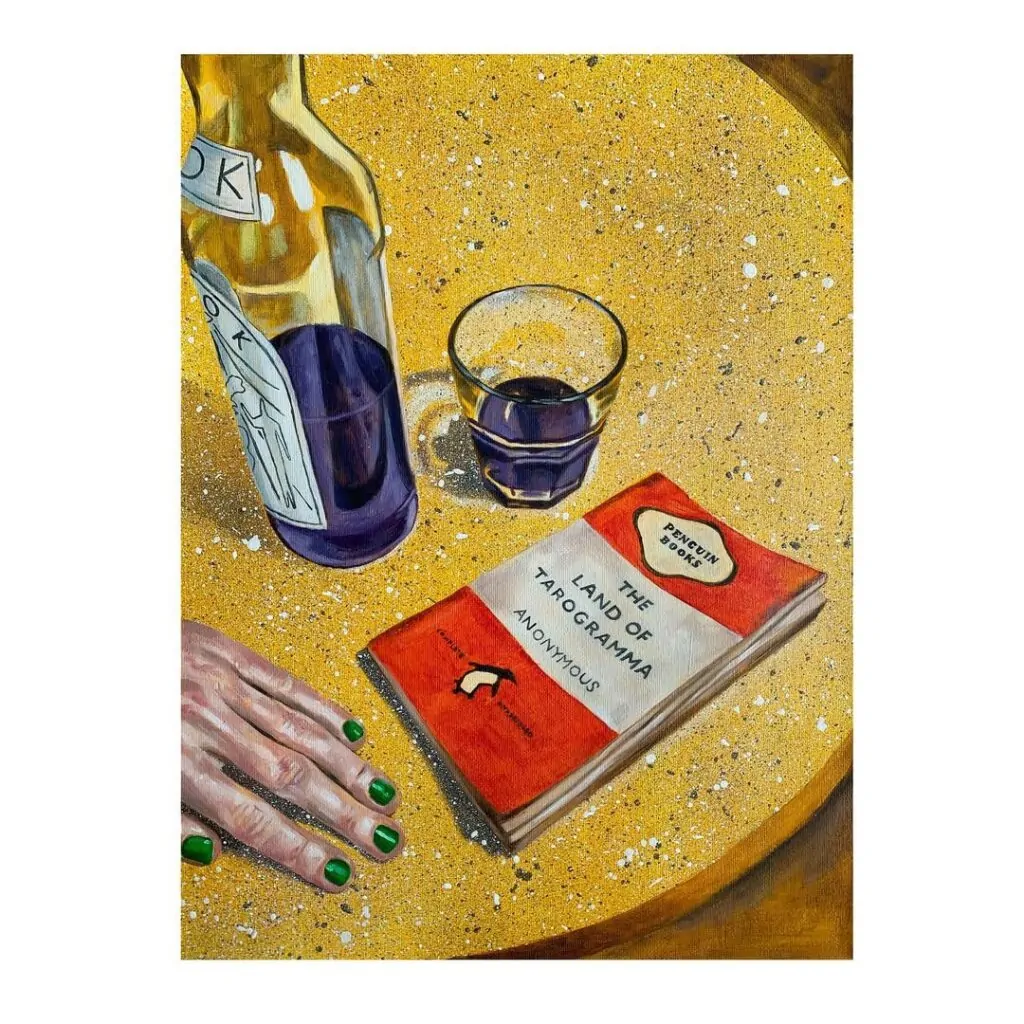
30x40cm
Oil on canvas
2021
What was the initial spark that led to the creation of Tarogramma? Was it born from a
single image or idea, or did it develop gradually over time?
Damien Cifelli: I think as humans we can’t help but imagine other worlds, whether it’s through natural curiosity or a search for an alternative way of life. Imagining other worlds is something I have always done, my art practice and Tarogramma are inseparable because the idea to create this place came at the same time as the decision to make art. I have never made art about anything else. But it has still been a gradual process from having the initial idea to where my work is now.
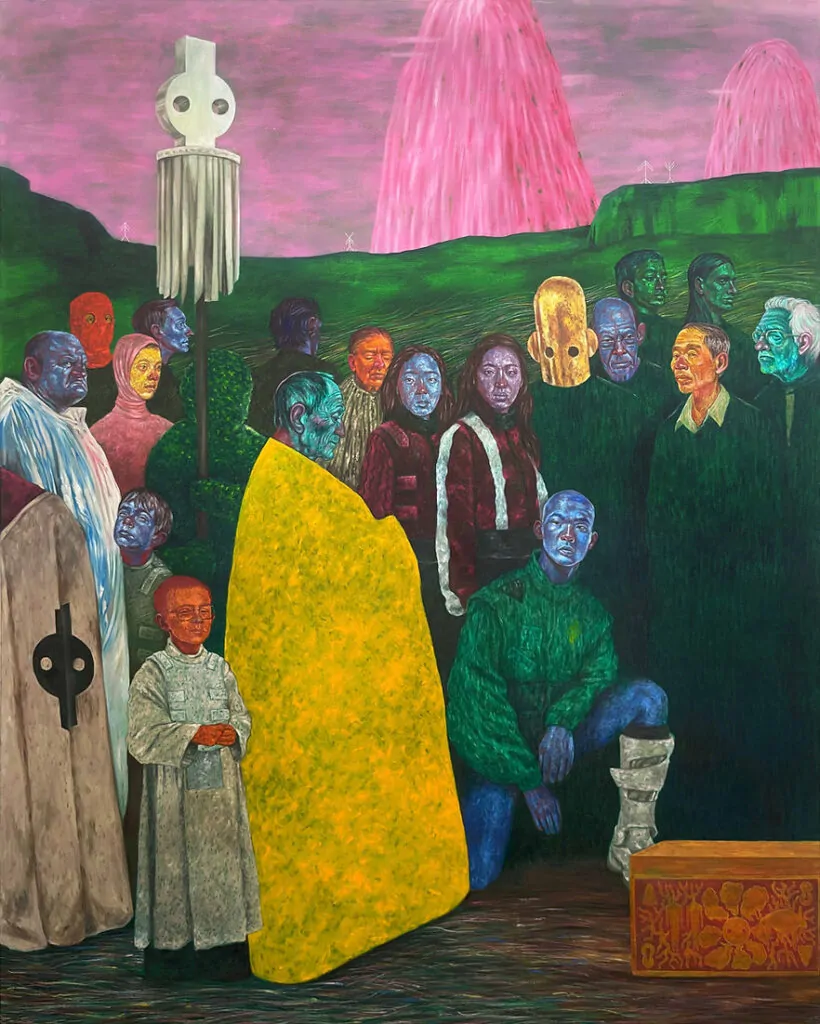
160x200cm
Oil on Canvas
You describe your practise as ‘fictional anthropology’. How do you define that term in relation to your work, and what does it allow you to explore that more traditional documentary or figurative painting might not?
Damien Cifelli: To me, creating fiction is an active process that opens up new potential pasts and speculative futures. The idea of ‘fictional anthropology’ is about necessarily leaving gaps and having ambiguity, which invites projection and questioning. Only fiction allows us to experience the unknown and the impossible; to stand outside ourselves and observe.
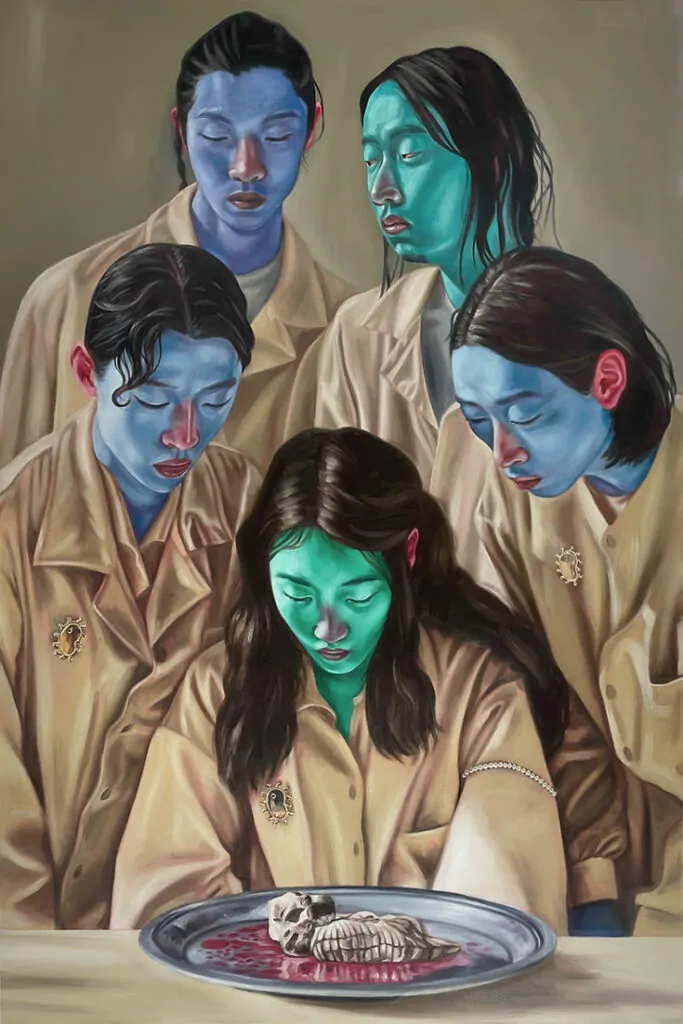
Oil on Canvas
100x150cm
Is Tarogramma entirely fictional, or does it draw on your own life experiences? Are there elements from your childhood in Edinburgh, family stories, or places you’ve lived that
filter into this alternate world?
Damien Cifelli: Tarogramma is entirely fictional, but part of the inspiration does come from growing up in Scotland, which has a very strong storytelling culture. There is a lot of importance placed on storytelling and the ability to tell a good story. There is also a more porous boundary between truth and myth, and the idea that mythology can often be the most truthful thing.
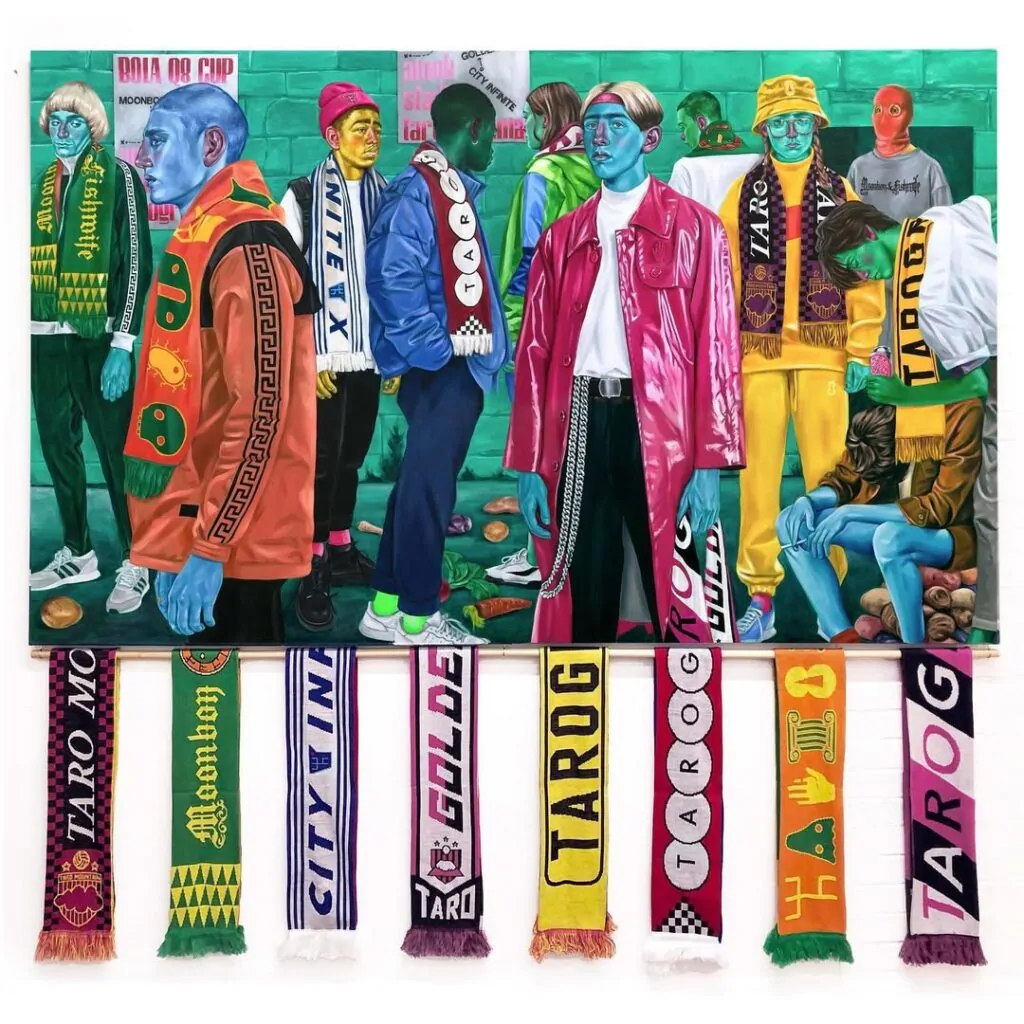
With your RCA graduate show approaching, what can audiences expect? How are you thinking about presenting Tarogramma in that context—and what does this moment mean to you creatively?
Damien Cifelli: It’s a culmination of a year of interrogating my practice on a deeper level and experimenting with new ways of exploring Tarogramma. I am presenting work which acknowledges the fiction, with staging, props, text and costume elements all woven in with the paintings.
Your compositions evoke the grandeur of history painting and classical sculpture. What draws you to that visual language, and how does it shape the way you depict this fictional civilisation?
Damien Cifelli: Classical work was a way of telling stories, often very well known ones. Religious imagery in particular was about creating an abundance of imagery around something essentially unknowable. We surround things we don’t understand with things we do understand. Stories, ideas, myths, images, artefacts. In an attempt to get closer, to spiral inwards towards the
truth, even though we’ll never reach it. This is very much what i’m attempting to do with my work.

‘Things to Come’
Oil on Canvas
91x121cm
Are there books, films, or television series that have helped shape Tarogramma or your broader worldview? What non-visual influences are essential to your creative process?
Damien Cifelli: Most of my inspiration doesn’t come from fine art. In the last year I’ve been inspired by writers like Alastair Gray, Jen Calleja, Clarice Lispector and Mark Fisher.
My primary inspiration comes from travel and experiencing different cultures. It’s fascinating how little understanding we have of the true depth of cultures that are not our own.
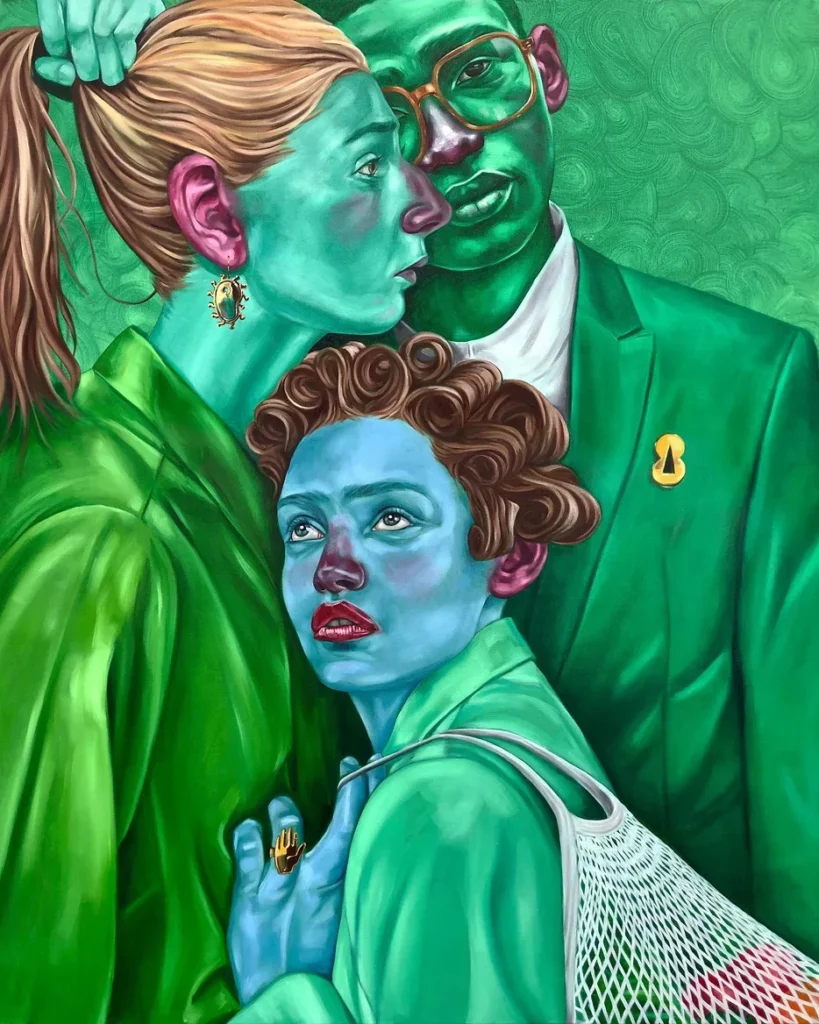
Image couresty of Damien Cifelli © Damien Cifelli
You ask, ‘By creating a fictional world, can we hold up a mirror to ourselves?’ What aspects of contemporary society are you most interested in reflecting—or critiquing—through Tarogramma?
Damien Cifelli: I think that is dependent on the viewer. They can’t be removed from whatever context, time or place they view the work in. A mirror doesn’t choose what to reflect.
In your view, is Tarogramma a utopia, a dystopia, or something in between? Does it function as an escape, a form of protest, or a reflection of today’s unresolved tensions?
Damien Cifelli: I think it is neither a utopia or a dystopia. It is more of a staging ground for alternative ways of seeing and feeling. It is not concerned with authenticity or coherence, but with the tension between recognition and uncertainty. It’s not about finding a resolution, but proposing new questions. I think this is particularly relevant in our current times, where everything feels simultaneous, contextless and adrift, where we have a fractured relationship with truth and a blurring of fiction and reality.
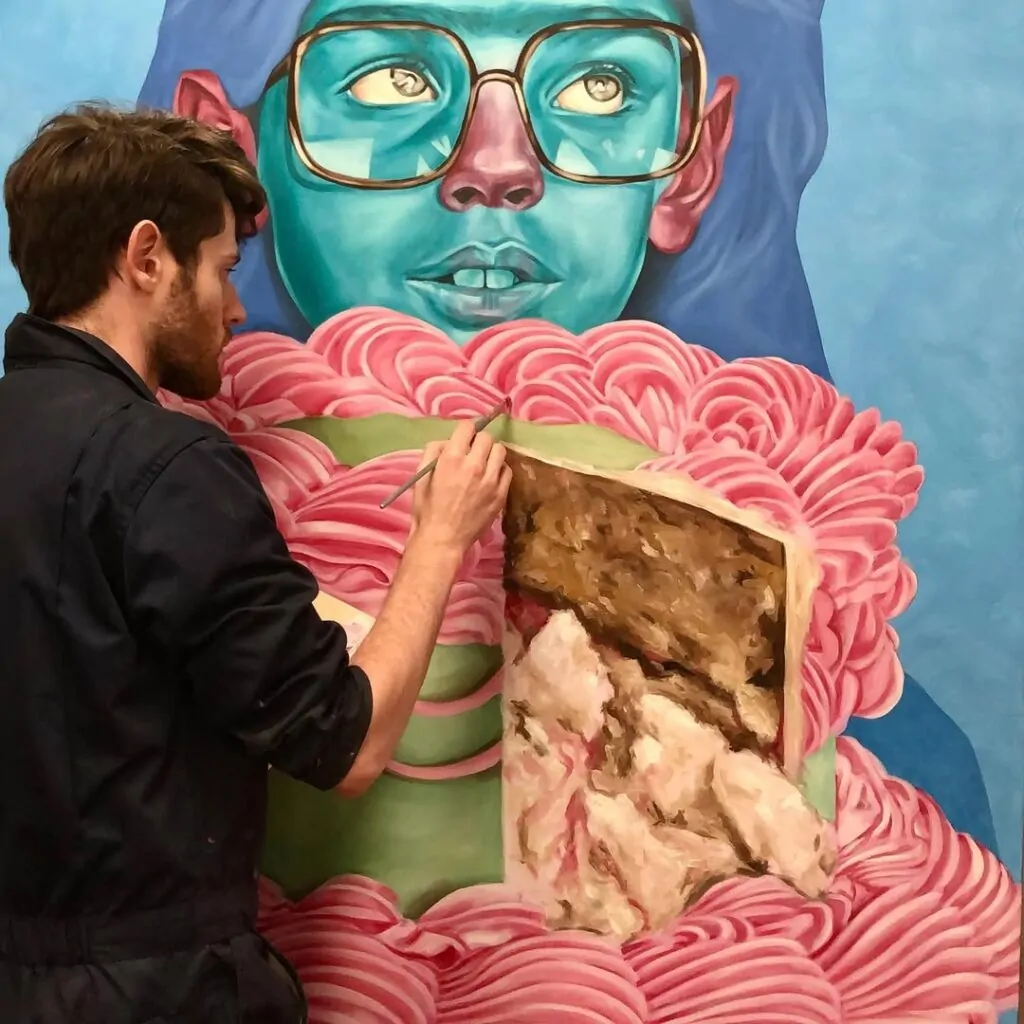
Looking beyond the RCA show, what’s next for Tarogramma? Are there new directions or dimensions you’re eager to explore—perhaps in new media, narrative layers, or collaborations?
Damien Cifelli: Yes, with something like a fictional world there are almost an infinite number of avenues available, so the task is more about figuring out which ones to choose. I am working in poetry and sound at the moment and I’m interested in performance work. I would like the work to feel all-encompassing and immersive.
©2025 Damien Cifelli


